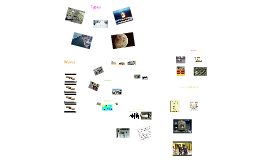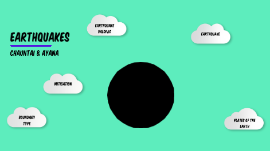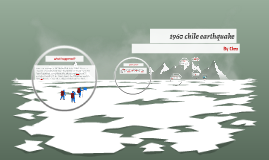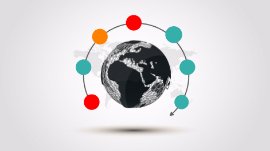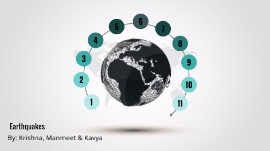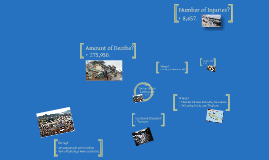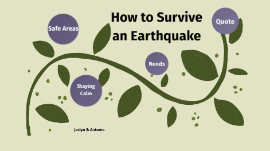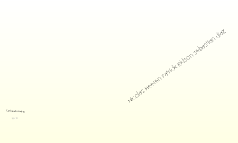Earthquake Presentation
Transcript: Makaya Laurence Environmental Science-P3rd Natural Disaster presentation Earthquake: Any sudden shaking of the ground caused by the passage of Seismic waves through Earths rocks. Seismic waves are produced when some form of energy stored in earths crust is suddenly released, usually when masses of rock straining against one another suddenly fracture & "slip" . Earthquakes occur most often along geologic faults, narrow zones where rock masses move in relation to one another. The major fault lines of the world are located at the fringes of the huge tectonic plates that make up earths crust. Introduction The four different types of Earthquakes #1 Tectonic- This earthquake is one that occurs when the earths crust breaks due to geological forrces on rocks & adjoining plates that cause physical & chemical changes. #2 Volcanic- This earthquake is any earthquake that results from tectonic forces which occur in conjunction with volcanic activity. #3 Collapse- These earthquakes are small earthquakes in underground caverns & mines that are caused by seismic waves produced from the explosion of rock on the surface. This earthquake is an earthquake that is the result of the detonation of a nuclear and/or chemical device. Explosion- #4 Effects & Benefits of this disaster- Effects on humans/animals: -Electricity, gas, and water can be shut off when pipes/wires move or break - Death or injuries -Loss of home and belongings -Food supplies run low -Diseases may be spread -Loss of animals, friends, and family -Lack of clean water -Lack of power to keep people and animals warm -No way to transport or get away from Earthquake due to roads being damaged or closed and vehicles damaged Effects to the environment: -Effects on landscape -Damaged houses -Collapsed bridges -Road damages -Damaged businesses, schools and community -Damaged pipes & cables -Damaged vehicles -May cause fire Effects -Pushes the land further up which helps vegetation flourish -Part of shaping the earth -Loosens & churnes the soil -Nutrients and minerals to be deposited evenly, creating a very fertile soil -New plant life -Newer/better homes, schools, and businesses built -New sandy beaches -Help to maintain hydrothermal activity Benefits: Benefits Small earthquake- (Berkeley, CA)- Jan 16th, 2018 An earthquake with a preliminary magnitude of 3.4 shook the bay area early Wednesday morning of January 16th. The quake was centered near Pediment & the Oakland Hills, according to the USGS, it was just over 7 miles deep and it shook the region for just a few short seconds at 4:42 pm, three small aftershocks occurred at 4:45 am, a 2.0 at 4:48 am and a 1.1 at 8:52 am. all four morning quakes were along the Hayward Fault. The first earthquake was recorded at a 3.7 magnitude , but was revised down by 5:20 am. Within 30 minutes of the quake, more than 2,000 people reported feeling the earthquake on the USGS's "Did you feel it" map. No injuries or damages were reported. Info The 3 recent BIG earthquakes-(Sendai, Japan, Bio-bio, Chile, and Sumatra, Indonesia) At 2:46 Am, a 9.1 magnitude earthquake takes place 231 miles northeast of Tokyo at a depth of 15.2 miles. The earthquake caused a Tsunami with 30-foot waves that damage several nuclear reactors in the area. It is the largest earthquake to EVER hit Japan. The combined total of confirmed deaths and missing is more than 22,000 (nearly 20,000 deaths and 2,500 missing). Deaths were caused by the initial earthquake and tsunami and by post-disaster health conditions. Sendai, Japan March 11, 2011 Bio-bio, Chile March 15, 2010 The magnitude 8.8 earthquake occurred on March 15, 2010, at 3:34 Am. The epicenter was located at 35.909 and 72.733 (just offshore), at a depth of about 35 km. The capital, Santiago, lies some 330 km, too far to be strongly affected. The affects were far more strongly felt in the cities of Conception (Chiles second city) and Chillian, both about 100 km away. The event was felt as far away as Southern Peru, Bolivia and Buenos Aires (Argentina) and lasted up to 30 seconds. It was the 5th strongest earthquake ever recorded and has been followed by numerous aftershocks , some as high as magnitude 6.9. The structural damage and number of people killed, injured or made homeless are still not clear but the fatality numbers have been approaching 800. More than 2 million people are thought to have been directly affected, and some 1.5 million building are expected to have been destroyed or badly damaged. On December 26, 2004, at 7:59 Am, an undersea earthquake with a magnitude of 9.1 struck off the coast of the Indonesian island of Sumatra. Over the next 7 hours, a tsunami triggered by the quake reached out across the Indian Ocean, devastating coastal areas as far away as East Africa. Some locations reported that the waves had reached a height of 30 ft or more when they hit the shoreline. The tsunami killed at least 225,000 people across a dozen countries with massive damage as well. Indonesian officials estimated






